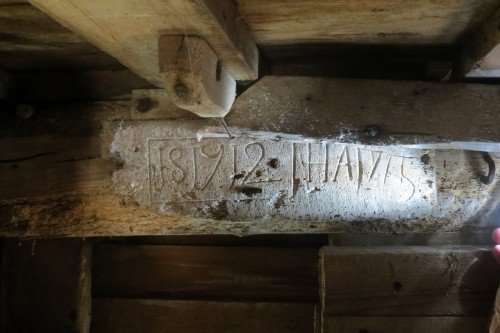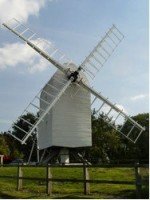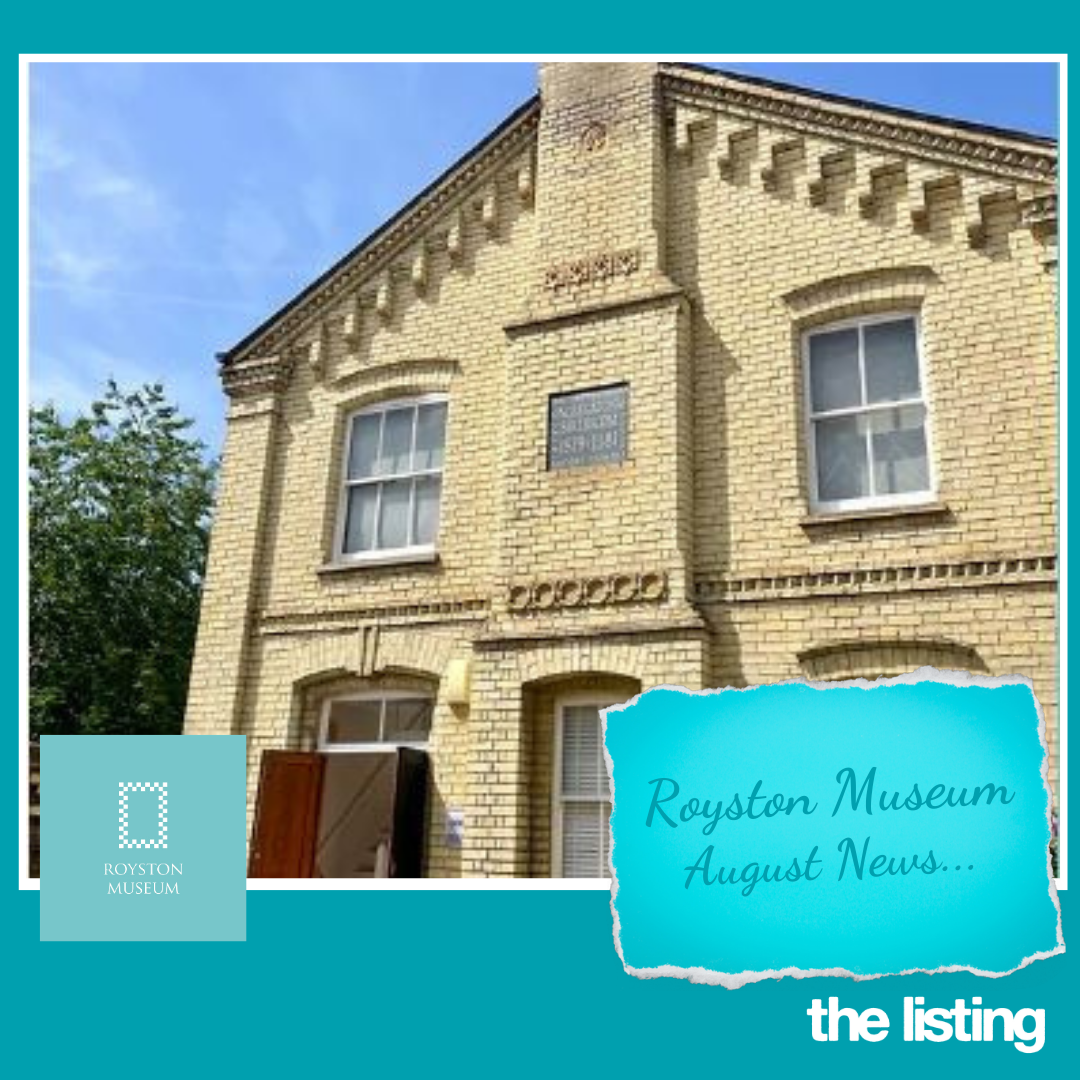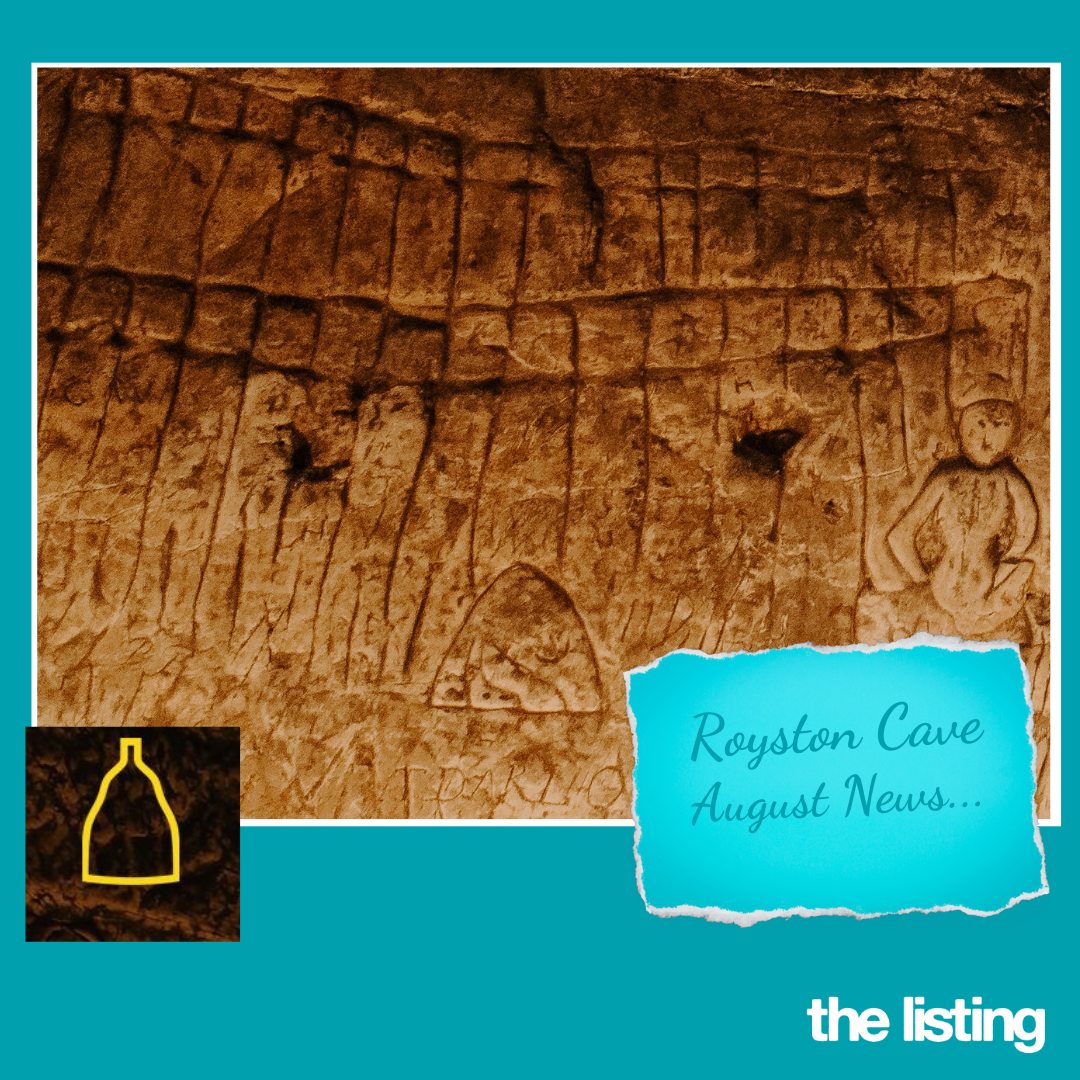Carved with pride…
We often think of people who carve their initials in buildings as vandals but Great Chishill windmill has some from 300 years ago that were carefully cut with workmanship and obvious pride.
JS in 1712 is presumed to have been one of the Soame family who owned the mill along with much of Great and Little Chishill. But we see right beside this, another set of initials: HA 1715. This we know to be Henry Andrews, the first in a long line of Andrews who ran the mill for close to two hundred years. Henry actually began renting the mill in 1721, so we suppose he was working for another miller when he found the time, and the need, to add his initials six years earlier. Did he add to the structure just three years after the efforts of JS or did he perhaps feel aggrieved that JS had laid claim to modification that was rightly his?
Interestingly these carvings are on a small piece of wood that was attached to the main structure when it was completely rebuilt around 1819. The 19th century workmen obviously had respect for the earlier builders and preserved their names and association with the mill.
A main beam of the present mill has a further set of initials: HA 1821. This is another Henry Andrews, great grandson of the earlier one, who may have been recording the completion of the rebuilding of the mill or his own accession to the role of miller.
Whilst the mill has had many modifications since the early 19th century, the basic structure dates from this time. It is an open trestle post mill, one of only five that still exist in the country so of huge importance to our local history.
The trestle is the structure beneath the body of the mill that supports the whole thing. It consists of wooden cross beams with quarter bars angled from the ends of the cross beams to the central post where it passes through the floor of the building. This is completely open to the elements and, without maintenance, the wood splits. If movement then occurs in the main joints, the building is in danger of collapse under the force of the wind. Unfortunately, as can been seen in the photograph, Chishill mill’s trestle is in a poor way.
The mill was still working in 1950 but then passed into the care of Cambridgeshire County Council. Over the years the budget for upkeep was ever more squeezed leading to the Council wishing to dispose of the building. A group of villagers formed the Great Chishill Windmill Trust and negotiated a 125-year lease. The Trust intends not only to save the structure but, to renovate the sails and equipment with a view to getting the mill grinding once more. There is, however, a long way and much fundraising to go.
















